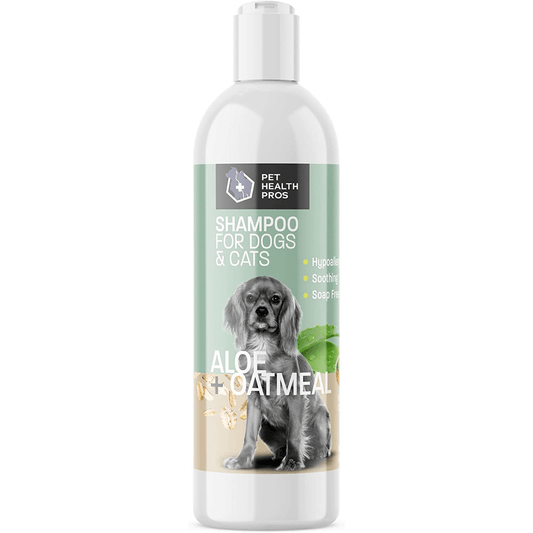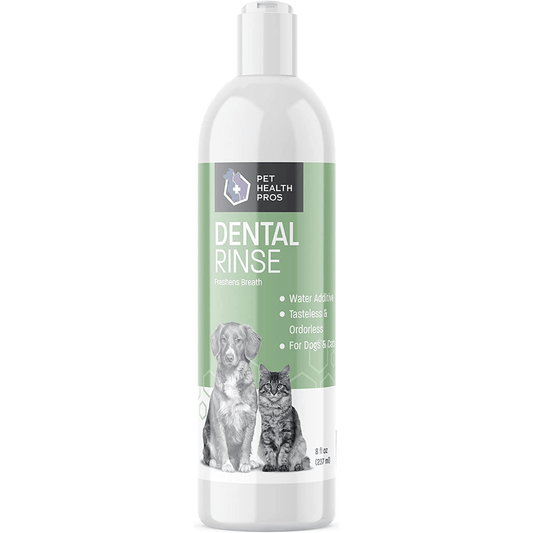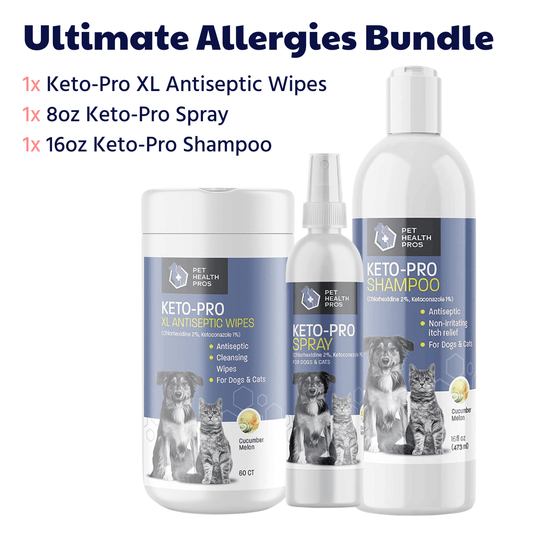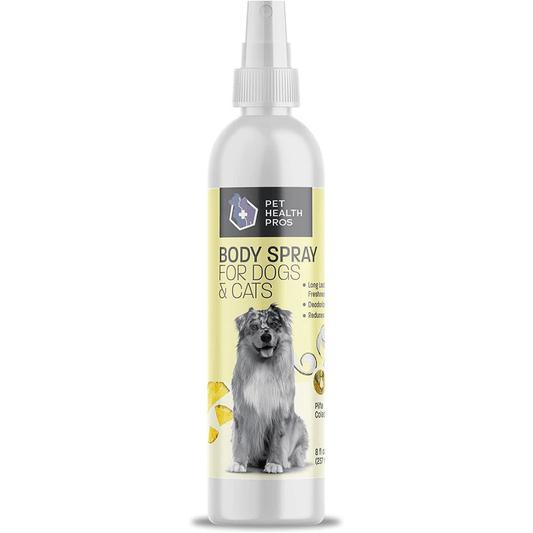Keeping your dog healthy and safe is a top priority for any pet owner. One important part of dog care is knowing how to clean wounds and prevent infections. This guide will teach you everything you need to know about using antiseptic flush for your dog. From understanding what it is to learning how to use it properly, we've got you covered.
Key Takeaways
- Antiseptic flushes help clean and prevent infections in your dog's wounds.
- It’s important to know when and how to use antiseptic flushes for the best results.
- Always consult your vet before starting any new treatment on your dog.
- Choose the right antiseptic flush by reading labels and getting recommendations from your vet.
- Watch for any side effects and know when to seek professional help.
Understanding Antiseptic Flush for Dogs
What is an Antiseptic Flush?
An antiseptic flush is a liquid solution used to clean wounds and prevent infections in dogs. It helps remove dirt, debris, and bacteria from the affected area, promoting faster healing. Chlorhexidine wipes are essential for canine first aid, offering antimicrobial cleaning for wounds and promoting pet health.
Benefits of Using Antiseptic Flush
Using an antiseptic flush on your dog can provide several benefits:
- Prevents infections by killing bacteria and other pathogens.
- Promotes faster healing of wounds and cuts.
- Reduces inflammation and discomfort.
- Helps keep the wound area clean and free from debris.
Common Ingredients in Antiseptic Flushes
Antiseptic flushes for dogs often contain ingredients that are safe and effective for cleaning wounds. Some common ingredients include:
- Chlorhexidine: A powerful antiseptic that kills bacteria and fungi.
- Povidone-iodine: An antiseptic that helps prevent infections.
- Saline solution: A gentle cleanser that helps remove dirt and debris without irritating the skin.
Using the right antiseptic flush can make a big difference in your dog's recovery. Always choose a product that is specifically designed for pets to ensure their safety and well-being.
When to Use Antiseptic Flush for Dogs
Identifying Infections and Wounds
Knowing when to use an antiseptic flush is crucial for your dog's health. Look for signs of infections like redness, swelling, or pus. Wounds that are open or have debris should also be cleaned with an antiseptic flush. This helps prevent further complications and promotes faster healing.
Preventative Care Uses
Antiseptic flushes aren't just for treating existing issues. They can also be used as a preventative measure. Regularly cleaning areas prone to infections, like paws and ears, can help keep your dog healthy. This is especially important for dogs that spend a lot of time outdoors.
Consulting Your Veterinarian
Before using any antiseptic flush, it's always a good idea to consult your veterinarian. They can provide guidance on the best products to use and how often to apply them. Your vet can also help you identify any underlying issues that might need more specialized treatment.
Regular check-ups with your vet can catch problems early, making treatment easier and more effective.
How to Properly Apply Antiseptic Flush
Step-by-Step Application Guide
Applying an antiseptic flush to your dog is a straightforward process if you follow these steps:
- Prepare the Area: Ensure the area around the wound is clean. You might need to trim the fur if it's too long.
- Clean Your Hands: Wash your hands thoroughly to avoid introducing any germs.
- Apply the Flush: Next, apply a small amount of antiseptic wound-cleaning solution to a gauze pad and gently dab it on the wound to further cleanse it. This step helps to remove any debris and bacteria.
- Let It Dry: Allow the area to air dry or gently pat it dry with a clean cloth.
- Monitor: Keep an eye on the wound for any signs of infection or adverse reactions.
Tools and Supplies Needed
To properly apply an antiseptic flush, you will need the following items:
- Antiseptic flush solution
- Gauze pads or cotton balls
- Clean cloth or towel
- Scissors (if trimming fur is necessary)
- Gloves (optional but recommended)
Safety Precautions
When using an antiseptic flush on your dog, it's important to follow these safety tips:
- Avoid Contact with Eyes: Make sure the solution does not get into your dog's eyes.
- Use the Right Amount: Do not overuse the antiseptic flush; a small amount is usually sufficient.
- Watch for Reactions: Be on the lookout for any signs of irritation or allergic reactions.
- Consult Your Vet: If you're unsure about any step, consult your veterinarian for guidance.
Always prioritize your dog's comfort and safety when applying any medical treatment. If your dog shows signs of distress, stop and seek professional help.
Choosing the Right Antiseptic Flush for Your Dog
Types of Antiseptic Flushes
There are several types of antiseptic flushes available for dogs. Some common ones include chlorhexidine, iodine, and saline solutions. Each type has its own benefits and uses. For example, chlorhexidine is known for its strong antiseptic properties, making it effective in reducing infections and promoting healing.
Reading Product Labels
When choosing an antiseptic flush, it's important to read the product labels carefully. Look for key ingredients and their concentrations. Make sure the product is safe for dogs and does not contain any harmful chemicals. If you're unsure about any ingredient, consult your veterinarian for advice.
Veterinarian Recommendations
Your veterinarian can provide valuable recommendations on the best antiseptic flush for your dog's specific needs. They can also guide you on how to use the product properly and what to expect in terms of results. Always follow your vet's advice to ensure the best care for your pet.
Using the right antiseptic flush can play a crucial role in enhancing your dog's health. It helps in reducing infections, promoting healing, and maintaining overall hygiene. Always consult your vet for proper usage and benefits.
Potential Side Effects and How to Handle Them
Recognizing Adverse Reactions
When using an antiseptic flush, it's important to watch for any adverse reactions in your dog. Common signs include redness, swelling, or itching at the application site. In some cases, your dog might also show signs of discomfort or pain. If you notice any of these symptoms, it's crucial to stop using the product immediately.
Immediate Steps to Take
If your dog shows signs of an adverse reaction, the first step is to rinse the area with clean water to remove any remaining antiseptic flush. Next, you can apply a cool compress to help reduce swelling and soothe the skin. If the symptoms persist, contact your veterinarian for further advice.
When to Seek Veterinary Help
In some cases, adverse reactions can be more severe. If your dog experiences difficulty breathing, excessive swelling, or if the reaction spreads to other parts of the body, seek veterinary help right away. These could be signs of a more serious allergic reaction that requires immediate medical attention.
Always keep an eye on your dog after applying any new product. Early detection of side effects can prevent more serious health issues.
Maintaining Your Dog's Health Post-Flush
Aftercare Tips
After using an antiseptic flush on your dog, it's important to keep the treated area clean and dry. Avoid letting your dog lick or scratch the area to prevent further irritation or infection. You might need to use an Elizabethan collar (cone) to stop your dog from reaching the treated spot. Check the area daily for any signs of redness, swelling, or discharge.
Monitoring for Recurrence
Keep an eye on the treated area for a few weeks after the initial flush. If you notice any signs of infection returning, such as increased redness, swelling, or a foul smell, contact your veterinarian. Regularly monitoring your dog's behavior and health can help catch any issues early.
Long-term Health Strategies
To maintain your dog's health in the long run, consider regular grooming and skin checks. This can help you spot any potential problems before they become serious. A balanced diet and regular exercise also play a crucial role in keeping your dog's immune system strong. Consult your veterinarian for personalized advice on maintaining your dog's health.
After giving your dog a flush, it's important to keep up with their health. Regular check-ups and the right products can make a big difference. For the best care items, visit our website. We have everything you need to keep your furry friend happy and healthy.
Conclusion
Using an antiseptic flush for your dog can be a simple and effective way to keep their wounds clean and free from infection. By following the steps outlined in this guide, you can ensure that your furry friend heals quickly and comfortably. Remember to always consult with your veterinarian before starting any new treatment, and keep an eye on your dog's wound for any signs of trouble. With a little care and attention, you can help your dog stay healthy and happy.
Frequently Asked Questions
What exactly is an antiseptic flush for dogs?
An antiseptic flush is a liquid solution that helps clean and disinfect your dog's wounds or infections. It kills germs and helps prevent infections from getting worse.
Why should I use an antiseptic flush on my dog?
Using an antiseptic flush can help clean wounds, prevent infections, and speed up healing. It’s a good way to keep your dog healthy and avoid more serious problems.
What are some common ingredients in antiseptic flushes?
Antiseptic flushes often contain ingredients like chlorhexidine, iodine, or alcohol. These ingredients help kill bacteria and keep the wound clean.
How do I know if my dog needs an antiseptic flush?
If your dog has a cut, scrape, or any kind of skin infection, an antiseptic flush can help. Always check with your vet if you’re unsure.
Are there any side effects of using an antiseptic flush on my dog?
Some dogs might have a mild reaction like redness or swelling. If you notice any serious reactions, like difficulty breathing, contact your vet right away.
Can I use human antiseptic products on my dog?
It's best to use products made specifically for dogs. Human antiseptics can be too strong and may harm your dog’s skin.








